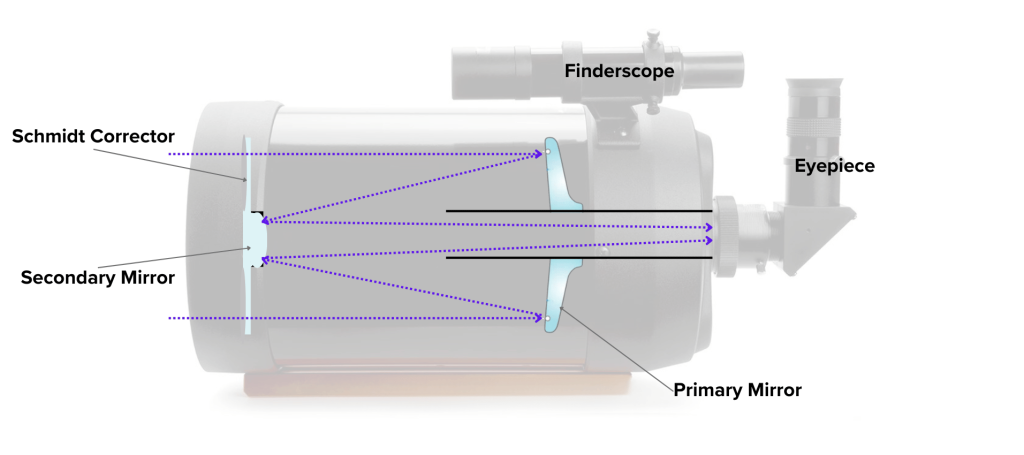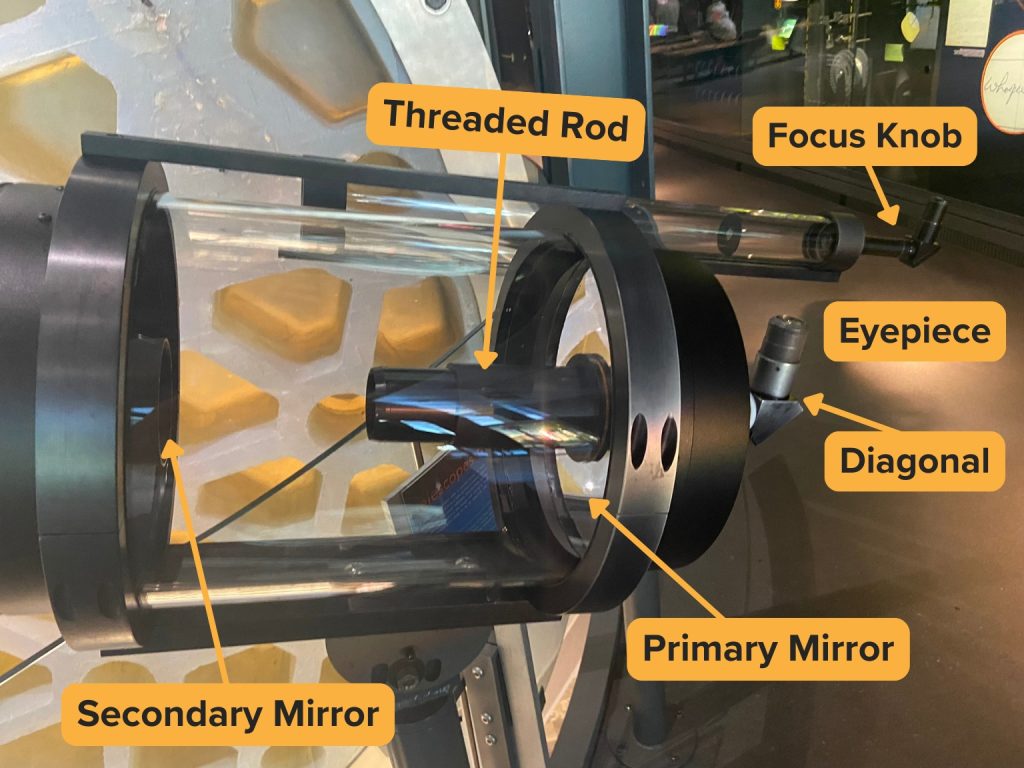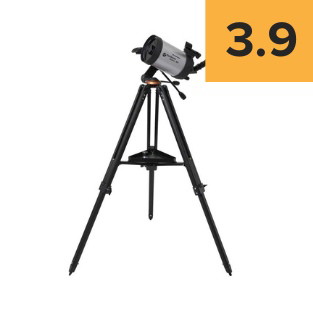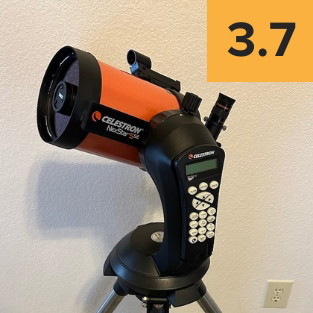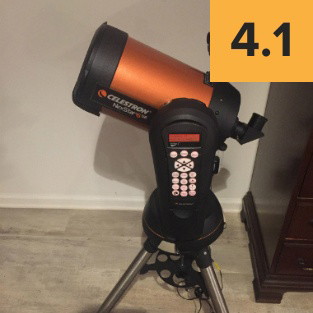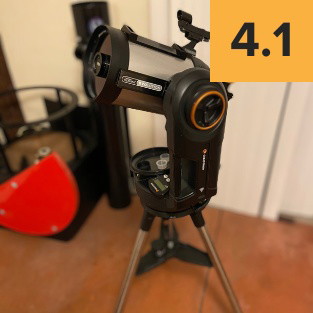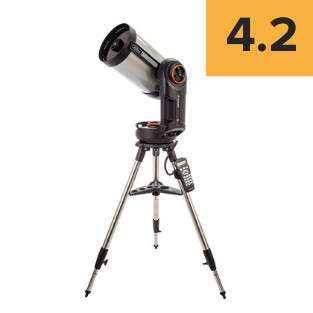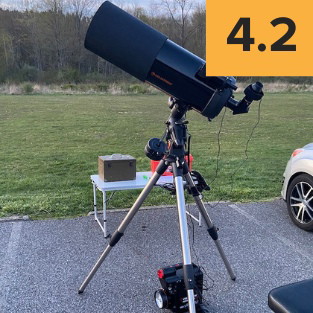Rank Category: SCTs Between $3000 and $6000
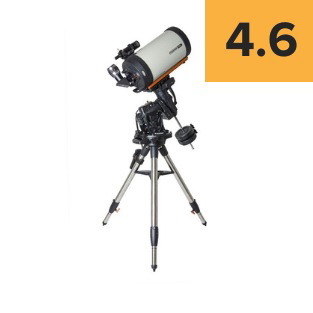
Celestron CGX 925 EdgeHD SCT
While perhaps a little overkill for visual use, the Celestron CGX makes for a rock-solid platform for imaging with the EdgeHD 9.25” optical tube and an f/7 reducer, while also being fairly good for visual observation without too much complexity or bulk and an easy user interface with its hand controller.
Celestron CGX 925 EdgeHD SCT
Rank 2
4.6/5
While perhaps a little overkill for visual use, the Celestron CGX makes for a rock-solid platform for imaging with the EdgeHD 9.25” optical tube and an f/7 reducer, while also being fairly good for visual observation without too much complexity or bulk and an easy user interface with its hand controller.
Rank 3
4.6/5
The Celestron CGX is more than adequate for astrophotography purposes with the EdgeHD 8” optical tube, and is usable for a variety of imaging and visual tasks at f/2, f/7, native f/10 or with a Barlow lens for a longer f/raito. However, the CGX is capable of supporting the larger C9.25 EdgeHD too.
Celestron CGX 1100 EdgeHD SCT
Rank 4
4.5/5
The Celestron CGX mount is more than enough to hold the C11 or EdgeHD 11 optical tubes for visual observation and decent enough for long-exposure deep-sky astrophotography, though a beefier and probably permanent mount would be more ideal for the job. The views through this scope are a delight too.
Rank 5
4.4/5
The Celestron CGEM II makes for an ideal mount for the C11 XLT for visual astronomy and planetary imaging use, being much sturdier than the Advanced VX and more compact than the CPC or larger CGX mounts. Neither the scope nor CGEM II is ideal for deep-sky imaging, but the C11 XLT is a fabulous scope for the visual observer or planetary imager.
Rank 6
4.4/5
The CPC 1100 is the largest telescope Celestron offers in an alt-azimuth mounted fork configuration, and for good reason. The 11” Schmidt-Cassegrain optical tube is already huge and bulky, and combined with the CPC fork mount, it makes for a downright intimidating telescope. However, the C11 optical tube offers unmatched views of the Moon, planets, and deep-sky objects compared to smaller instruments, provided you can fit them into its relatively narrow field of view.
Rank 7
4.3/5
The CPC 9.25 is bulkier and heavier than the NexStar Evolution 9.25” but is significantly more sturdy. The CPC fork mount is simpler to set up than an equatorially-mounted configuration of the C9.25 XLT optical tube, though it’s of course a lot heavier and less versatile. You should probably consider an equatorial mount for the C9.25 XLT regardless of what you plan to do with it, but of the alt-azimuth C9.25 and mount configurations, the CPC is definitely the better choice.
Rank 8
4.2/5
The regular Celestron C9.25 is not ideal for deep-sky astrophotography compared to the EdgeHD version, and the CGX mount is overkill with this scope for visual use. As such, there’s not much of a point in purchasing, though the CGX makes for a fine mount with plenty of capabilities.
Celestron CGX 800 SCT
Rank 9
4.2/5
The Celestron C8 XLT is extremely overmounted for visual use on the CGX while being sub-par for deep-sky astrophotography compared to the EdgeHD or RASA designs. As such, while there’s nothing inherently wrong with the scope, we do not recommend this combination as highly compared to those options.
Celestron CGEM II 800 EdgeHD SCT
Rank 10
4.1/5
The Celestron CGEM II can technically carry the 8” EdgeHD optical tube for deep-sky imaging, but it’s subpar for the job compared to other mounts with stepper motors, and overkill for visual use compared to the Advanced VX (the EdgeHD optics are also unnecessary for the task).
Celestron CPC 1100 EdgeHD SCT
Rank 11
4.1/5
The Celestron EdgeHD optical configuration offers few perceptible advantages over the regular C11 XLT for visual use or planetary imaging, but the CPC fork mount is not exactly the best for deep-sky astrophotography, even when paired with a wedge and autoguiding. It also possesses the same extremely bulky and heavy frame as the regular CPC 1100 model, which may be uncomfortable for many users to set up or transport.
Celestron CGEM II 925 SCT
Rank 12
4.1/5
The CGEM II is somewhat overkill for holding the C9.25 XLT for visual use while being completely insufficient for deep-sky astrophotography with such a big scope. However, it is a little steadier than the Advanced VX if you demand more rigorous requirements.
| Rank 13 | Celestron Advanced VX 11″ Schmidt-Cassegrain | 3.9 |
| Rank 14 | Celestron CGX-L 9.25 SCT | 3.8 |
| Rank 15 | Celestron CGEM II 925 EdgeHD | 3.8 |
| Rank 16 | Celestron CPC 925 EdgeHD SCT | 3.6 |
| Rank 17 | Celestron CPC 800 EdgeHD SCT | 3.6 |
| Rank 18 | Celestron Advanced VX 9.25″ EdgeHD SCT | 3.5 |

